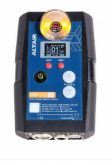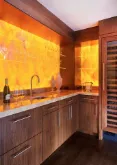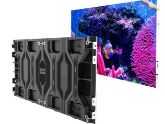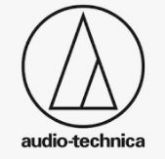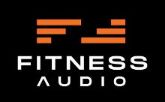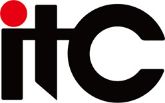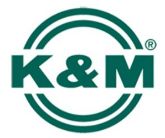Frequently Asked Questions: Illuminating Your School's Stage
Investing in stage lighting for a school hall for school productions can seem like a complex task, but with the right information, you can make choices that profoundly benefit your students and elevate every school event. This FAQ aims to answer common questions about selecting appropriate lighting fixtures and controllers for educational environments.
Why Invest in Stage Lighting for Our School?
Q: Beyond just seeing the stage, what are the main benefits of having stage lighting in a school?
A: Stage lighting offers numerous benefits that extend beyond simple visibility. It significantly boosts student confidence in public speaking and performance by creating a professional and focused environment where they feel seen and their presence is amplified. It enhances the quality and impact of school assemblies, drama productions, and presentations, making them more engaging and memorable for the audience. Furthermore, involvement in technical theatre, including lighting, cultivates essential life skills such as teamwork, problem-solving, and communication, and can even spark new passions and open doors to future career opportunities in AV and production.
Choosing the Right Lights
Q: What types of stage lights are generally suitable for school use?
A: For school environments, LED lighting is highly recommended due to its energy efficiency, compact size, and ability to produce a wide range of vibrant colours. Common types of fixtures include:
- LED PAR cans: Versatile for colour washes and general illumination.
- Wash lights: Create broad, even lighting across the stage, ideal for setting moods.
- Compact moving head lights: Offer dynamic effects like beams and patterns, adding visual interest.
- LED spotlights: Excellent for highlighting performers or specific areas.
Q: What are the specific advantages of using LED lighting fixtures in a school setting?
A: LED fixtures offer several key advantages:
- Energy Efficiency: They consume less electricity than traditional lights, leading to ongoing cost savings.
- Reduced Heat Production: LEDs produce less heat, making them safer for students and staff, and contributing to a longer lifespan for the fixtures.
- No Lamp/Bulb Changes: Unlike traditional lights, LEDs do not require frequent lamp replacements, saving significant time and maintenance costs, especially for ceiling-mounted fixtures.
- Improved Visual Comfort: Modern LEDs minimize glare and flicker, which can reduce eye strain and improve concentration for students.
- Dynamic Control: Many LED systems allow for adjustable color temperature and dimming, enabling teachers to create different lighting scenes to enhance focus or relaxation.
Q: How do I determine the right size and scale of lighting setup for our school's needs and budget?
A: Lighting systems can be designed to fit a wide range of budgets and venue sizes, from small classrooms to large auditoriums. It's about choosing an "appropriately spec'd" system that offers long-term value and educational relevance. Here's a general guide:
|
Setup Size / Venue Type |
Typical Budget Range (Estimated) |
Key Fixtures & Equipment (Examples from Event Lighting) |
Core Capabilities & Benefits |
|
Small |
$1,000 - $5,000 |
4-8 Event Lighting LED PAR cans, basic DMX controller, light stands, DMX cables. |
Basic color washes, highlighting speakers/performers, simple scene changes. Ideal for small classrooms or multi-purpose rooms. Focus on foundational DMX learning. |
|
Medium |
$5,000 - $20,000 |
8-16 Event Lighting LED PARs, 2-4 compact Event Lighting LED moving heads, more advanced DMX console, trussing/hanging points, DMX distribution. |
Dynamic color changes, simple moving effects, focused illumination for drama, dance, and musical performances. Suitable for medium school auditoriums or gym stages. Offers more creative control and student learning opportunities. |
|
Large |
$20,000 - $50,000+ |
16+ professional-grade Event Lighting LED PARs/fresnels, 4-8 Event Lighting LED moving heads, professional DMX console, comprehensive rigging, DMX/power infrastructure. |
Full theatrical productions, complex scene changes, immersive environments, professional-level event quality. Designed for dedicated school theatres or large auditoriums. Provides extensive teaching moments mirroring industry standards. |
Q: Why should our school avoid the cheapest lighting equipment on the market?
A: While tempting for budget reasons, "toy-grade" or cheap lighting equipment often leads to significant long-term problems and is a false economy. Common issues include:
- Noisy Power Supplies: Distracting fan noise during performances.
- Short Lifespan & Premature Failure: Inferior components and poor heat management lead to lights breaking down quickly.
- Dim & Inconsistent Output: Lights may not be bright enough or may spontaneously dim.
- Inaccurate Colour Rendering & Flickering: Colours may appear dull or unnatural, and lights can flicker due to poor quality, under-specc’d or faulty drivers, causing eye strain.
- Safety Concerns: Overheating due to inadequate heat dissipation can lead to damaged components, short circuits, and even smoke or fires. These issues directly impact the quality of events, frustrate users, and result in higher maintenance and replacement costs over time.
Q: What are the benefits of investing in professional-grade lighting fixtures, even entry-level ones, for a school?
A: Professional-grade fixtures, such as those from Event Lighting, offer superior performance and durability, providing a robust and reliable foundation for your lighting program. They ensure consistent colour performance, minimize colour shift, and have high Colour Rendering Index (CRI) values for accurate colour reproduction. They are built to withstand frequent use and provide an authentic learning environment, mirroring the equipment students will encounter in the "real production, AV and theatre world" after leaving school. This maximizes learning, minimizes frustration, and prepares students with genuinely transferable skills.
Selecting the Right Lighting Controller
Q: Why is DMX control important for school stage lighting?
A: DMX (Digital Multiplex) is the industry standard for professional lighting control, offering:
- Precision Control: Allows for precise adjustment of brightness, colour, and effects for multiple fixtures from a single controller.
- Flexibility & Creative Possibilities: Enables programming and saving of lighting presets, creating dynamic and engaging designs.
- Scalability & Expandability: As the school's needs grow, new fixtures can be easily added and control configurations modified without overhauling the entire system.
- Professional Relevance: Provides students with hands-on experience using industry-standard equipment, directly preparing them for careers in broadcasting, video production, and live events.
Q: What are some recommended lighting controllers that balance user-friendliness with professional capabilities for schools?
A: When choosing a controller, consider the number of fixtures, whether you prefer a standalone console or PC software, and ease of use for various users. Several options are suitable for schools:
- ChamSys QuickQ series (QuickQ 10, 20, 30): These consoles are popular for small-to-medium venues like schools due to their intuitive, smartphone-like touchscreen interface, powerful software, and built-in Wi-Fi for remote control.
- LSC Lighting Mantra Lite: A portable, compact, and fully featured professional console with a user-friendly interface. It can control LED, moving, and conventional lights, includes an 'Animate' feature for complex effects, and its software guides the user, making it easy to learn. It's commonly used in schools and professional venues.
- ChamSys MagicQ MQ50: A more advanced option that still fits well with small- and medium-sized venues like schools, offering ease of use, precision, and an HD touchscreen.
Q: Should we choose a standalone console or one that requires accompanying PC software?
A: Standalone units generally offer simpler operation and a smaller learning curve, which can be beneficial in a school setting where various users may operate the equipment. Software-accompanied consoles can offer more sophisticated functions but may require a dedicated laptop and more training. The ideal choice balances immediate accessibility for beginners with the depth of control needed for diverse productions and future skill development.
Budgeting and Consultation
Q: What are typical budget expectations for school stage lighting systems?
A: Budgets can vary widely. A basic setup for a small production might start around $1,000-$5,000, while a comprehensive fit-out for a larger auditorium could range from $20,000 to $50,000 or more. It's important to understand that a $2,000 budget is often considered "unrealistic" for anything substantial without existing infrastructure, as a control console alone can take a significant portion of that. Some schools currently rent lighting for $500-$2500 per event, which adds up over time.
Q: Who should we consult before making any purchases?
A: It is highly recommended to consult with experienced theatre and school lighting professionals, such as those from a local college or a theatrical lighting supplier such as Edwards Sound Systems. Reputable suppliers are generally helpful and focused on repeat business, not overselling. They can assess your specific venue, understand your unique needs and ambitions, and help design a scalable, high-quality system that maximizes both educational and experiential benefits within a responsible budget.
Student Involvement
Q: How can students benefit from being involved in the technical aspects of stage lighting?
A: Student involvement in technical theatre, including lighting, offers invaluable hands-on learning experiences:
- Develops Practical Skills: Students gain knowledge about equipment, troubleshooting, and operating complex systems, which are highly valued in industries like event production, broadcasting, and IT.
- Fosters Teamwork & Responsibility: Working together on productions builds essential social skills like active listening, effective communication, and respect for diverse viewpoints . It also instills a sense of ownership and pride in their contributions.
- Connects to STEM: Lighting involves principles of optics, electricity, engineering, and programming, making abstract STEM concepts tangible and exciting through real-world application.
- Sparks New Passions: For students not inclined towards performing, technical theatre offers an equally valuable avenue within the arts and can lead to discovering new interests and career paths.
A dedicated student technical crew, empowered by quality equipment and training, can become an invaluable asset to the entire school community, reducing the burden on faculty and staff and increasing the quality and frequency of school events.
If you need advice or more information contact us now!

